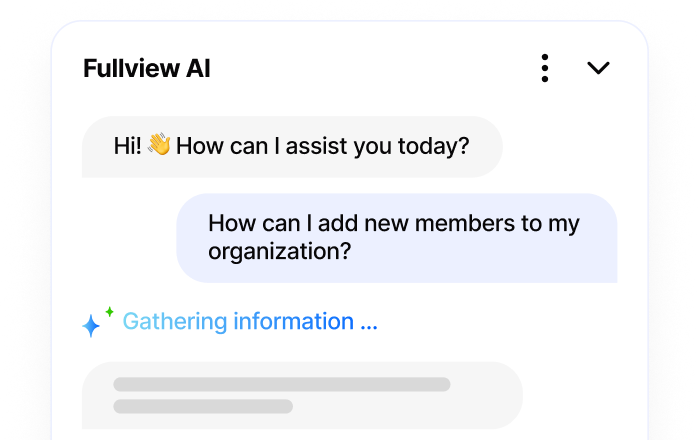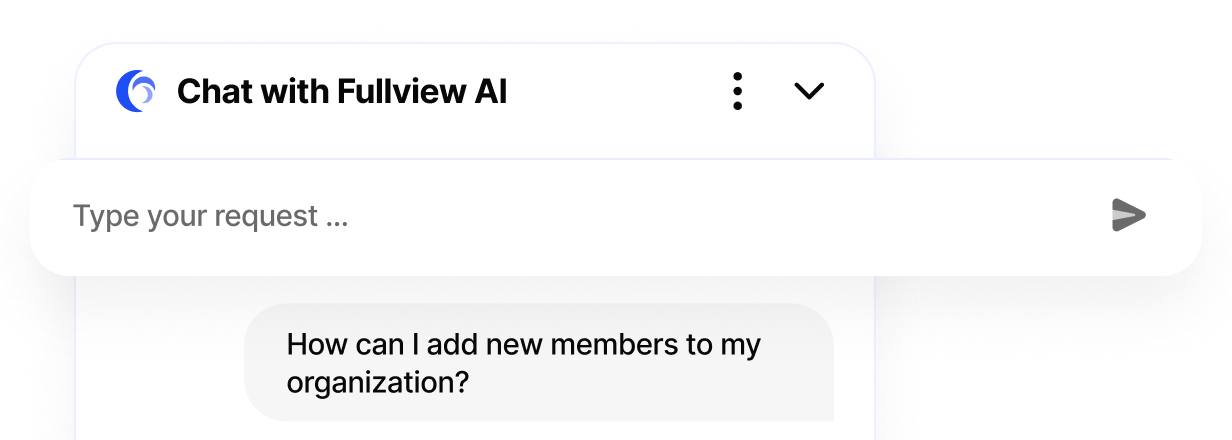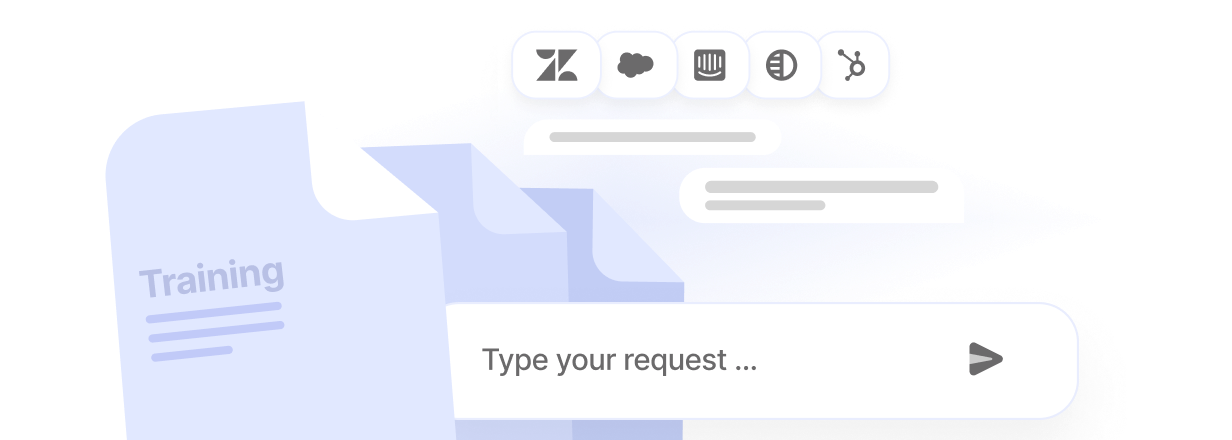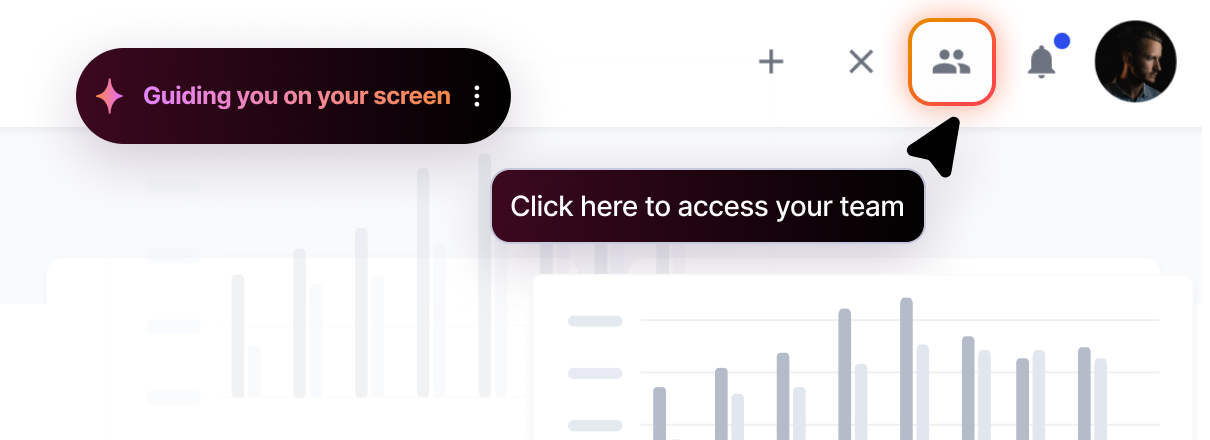Only 30% of today's consumers say they're okay with interacting through chatbots and virtual assistants via customer service concerns. This could be because not many businesses have leveraged the power different types of chatbots provide, or consumers prefer a human being on the other end of the line.
The many benefits of leveraging chatbots for your systems are clear. The challenge now is to ensure they fulfill the specific needs of your audience while communicating in a natural and engaging tone, so your audience feels comfortable interacting with technology.
In this article, we'll review the types of chatbots that can significantly boost your business. If you want to learn more about chatbots and their benefits, head over to our recent article on the best customer service chatbots. We're going to focus more on the different types viable here.
Different kinds of chatbots
Trying to navigate through the vast and ever-shifting landscape of chatbot types is a challenging task. It helps to understand what type you're working with so your team can apply it correctly to your needs. We're going to look at:
- Menu/Button-Based Chatbots
- Linguistic-Based (Rule-Based Chatbots)
- Keyword Recognition-Based Chatbots
- Machine Learning Chatbots
- The Hybrid Model
- Voice Bots
Menu/button-based chatbots
Remember those old multiple-choice tests you had to take in school? These chatbots are pretty much the same idea. With Menu/Button-Based chatbots, you are presented with several options (in the form of a navigational menu or a selection of buttons).
When you click on a button or menu option, you are directed to the resource needed based on the information you request. That resource also appears in a menu or button style until you refine your search enough to get the precise information necessary to move forward. It's kind of like a Choose Your Own Adventure book where you decide where to go next.
Linguistic-based (rule-based chatbots)
Rule-based chatbots are fantastic for FAQs on a website. They operate through a structured "call and response" style of system. This is similar to the "if/then" concept of programming. If a specific question is asked, then predefined responses are generated based on the training from previous queries.
These are fantastic when you have a lot of similar frequent questions. Maybe you run a software company where the same 20 questions are being asked repeatedly. This form of chatbot saves you time and resources so your customers can get solutions without needing human assistance.
Keyword recognition-based chatbots
This option is highly driven by chatbot keywords entered into queries. Specific terms customers use produce highly relevant answers. This type of chatbot is a good solution for working environments involving search engines, customer support, or for browsing a larger-than-average reservoir of information.
Machine learning chatbots
Natural Language Processing (NLP) and AI (Artificial Intelligence) are leading the charge with these different types of AI chatbots. They are designed to adapt to the input (prompts) information in their communication screens.
You'll find ML Chatbots in many industries where personalization is vital to success. These might include SaaS, financial services, health insurance, and similar markets. The goal is to make the user experience as smooth and engaging as possible by adapting to their needs. The most advanced implementations go beyond conversation by actually navigating software applications alongside users, providing visual guidance and hands-on assistance that traditional chatbots can't match.
In SaaS companies, ML chatbots can guide users through complex software features, automatically understand their role and permissions, and provide contextual help. Financial services use them for account inquiries, transaction support, and compliance-friendly assistance that adapts to regulatory requirements.
Conversational AI vs Traditional Chatbots
While traditional chatbots follow predetermined paths and responses, conversational AI represents a fundamental shift in how automated systems interact with users. Traditional chatbots excel at handling straightforward, predictable queries through structured flows. Conversational AI, however, understands context, remembers previous interactions, and can handle complex, multi-turn conversations.
The key difference lies in capability: traditional chatbots tell users what to do, while advanced conversational AI can actually show and guide users through processes. Some modern systems can even navigate applications autonomously, providing visual, step-by-step assistance that bridges the gap between automated responses and human intervention.
For businesses considering their options, traditional chatbots work well for FAQ-style interactions, while conversational AI becomes essential when customers need guidance through complex workflows or technical processes.
The hybrid model
Hybrid chatbots marry a variety of different technologies. For example, you may have built a rule-based chatbot with specific boundaries that learns how to adjust responses to better serve customer needs through machine learning.
Businesses looking for more flexibility and versatility in handling user queries will likely benefit from this modeling. For example, a hotel or resort might want this chatbot when people ask questions based on the best seasons to visit or festivals in the area.
Voice bots
Voice bots are transforming how we interact with business and home products. Around 123.5 million people in the US use voice assistants, and that number is growing rapidly as the technology becomes more sophisticated.
These chatbots use machine learning and AI to interpret spoken commands and provide appropriate responses. Beyond simple examples like Amazon's Echo or Siri, enterprise voice bots are handling complex customer service scenarios, sales inquiries, and even technical support through natural speech patterns.
Industries like automotive, healthcare, and hospitality are leveraging voice bots for hands-free experiences. Car manufacturers integrate them for navigation and system controls, while hotels use voice assistants for room service and concierge functions. The challenge lies in training voice bots to understand diverse accents, background noise, and industry-specific terminology.
Integration complexity increases with voice bots since they require additional infrastructure for speech-to-text processing and often need to connect with existing business systems for meaningful responses.
Implementation Best Practices
Successfully deploying chatbots requires careful planning and realistic expectations. Start with clearly defined use cases; trying to solve everything at once often leads to poor user experiences. Focus on your most common customer inquiries first, then expand functionality gradually.
Training is crucial regardless of chatbot type. Rule-based systems need comprehensive question-and-answer mapping, while AI-powered solutions require extensive conversation data and ongoing refinement. Plan for 3-6 months of active training and optimization before expecting optimal performance.
Common pitfalls include over-promising capabilities, inadequate fallback options when the bot can't help, and poor integration with existing support workflows. Always provide clear escalation paths to human agents and set proper expectations about what the bot can and cannot handle.
Modern implementation approaches focus on seamless handoffs between automated and human assistance. Advanced platforms can even provide visual guidance and real-time application navigation, reducing the need for complex bot training while delivering more effective customer support.
Measure success through specific KPIs: resolution rate, customer satisfaction scores, deflection rate from human agents, and average handling time. Track these metrics monthly to identify improvement opportunities.
Types of chatbots based on business use cases
While many different types of chatbots are available, how they are applied has much to do with your business. There is not one solution for all industries, although there are certainly chatbots that bridge many of the gaps. In most cases, you'll find two core uses for these technologies:
- Support Chatbots
- Sales Chatbots
Support chatbots
Support chatbots are precisely what you imagine them to be. A customer enters a question, and the chatbot generates a response based on a predefined set of answers. They are fantastic for dealing with level 0 and level 1 support requests because they shorten wait times by providing instant answers to customers' needs.
However, when the questions become more complex, you should escalate them to level 2 and level 3 customer support agents and use technology specifically made for those levels of customer support. Chatbots aren't appropriate in these cases. We've covered what level 3 customer support is in a previous article.
Modern AI-powered support goes a step further by combining conversational assistance with visual guidance. Instead of just escalating complex issues, advanced systems can actually show users how to solve problems by navigating their applications in real-time.
For example, a SaaS company might use support chatbots to handle password resets and billing questions (level 0-1), while complex integration issues or custom configuration requests require visual guidance tools that can actually demonstrate solutions within the user's environment.
An example of next-generation support technology is AI agents that provide autonomous assistance. They can understand complex user issues and actually navigate through applications to demonstrate solutions. This bridges the gap between simple chatbot responses and human intervention, offering instant, visual problem-solving that reduces frustration and resolution times.
Sales chatbots
Sales chatbots are a bit more direct. They help enhance user engagement by guiding customers through purchase decisions and scenarios. The goal here is to optimize conversions by offering personalized product suggestions that help customers always find the specific resources they were looking for in the beginning.
Advanced sales assistance can even include interactive product demos where AI guides prospects through actual software features in real-time, creating more engaging and effective sales conversations.
Measuring Chatbot ROI and Success Metrics
Understanding your chatbot's impact requires tracking the right metrics beyond basic satisfaction scores. Key performance indicators vary by chatbot type and business objectives, but several universal metrics apply across implementations.
Cost Metrics: Calculate cost per interaction compared to human agent costs. Most businesses see 60-80% cost reduction for successfully automated interactions. Factor in implementation, training, and maintenance costs for accurate ROI calculations.
Efficiency Metrics: Track resolution rate (percentage of issues fully resolved by the bot), deflection rate (percentage of inquiries handled without human escalation), and average handling time. High-performing chatbots achieve 70-85% deflection rates for level 1 support queries.
Quality Metrics: Monitor customer satisfaction scores specific to bot interactions, completion rates for multi-step processes, and escalation reasons. This data reveals where bots excel and where human intervention remains necessary.
Business Impact: Measure conversion rates for sales bots, lead qualification accuracy, and customer lifetime value changes. Advanced analytics can correlate bot interactions with broader customer behavior patterns.
For complex technical support scenarios, consider metrics like first-contact resolution and the accuracy of guided troubleshooting. Systems that provide visual guidance often show higher success rates than traditional conversational approaches.
How to choose the best chatbot for your business
Okay, now that we've covered the basics and outlined the types of chatbots and how you can best use them in your business, it's time to look at the considerations that you'll need to look at when selecting one for you. Part of your strategic decision will include:
- Budget
- Goals
- Use Case
- Technology
- Scalability
- User Experience
Budget
The financial constraints of your business play a role in the types of chatbot platforms you'll select. It doesn't matter if you're looking at advanced AI-driven bots or more straightforward rule-based options. How much money you have to spend will determine the types of chatbot technology you'll utilize.
Security and Privacy Considerations
Data security and privacy compliance are critical factors in chatbot selection, especially for regulated industries like financial services and healthcare. Your chatbot will handle sensitive customer information, making security architecture a primary consideration rather than an afterthought.
Key security requirements include end-to-end encryption for all conversations, secure data storage with retention policies, and compliance with regulations like GDPR, CCPA, or industry-specific requirements like PCI DSS for payment processing.
Consider where conversation data is stored and processed. Cloud-based solutions offer scalability but require careful vendor evaluation for security certifications. On-premises solutions provide more control but increase infrastructure complexity.
For customer support scenarios involving sensitive account information or technical troubleshooting, look for platforms that offer configurable data masking and privacy controls. Some advanced systems can provide visual assistance while automatically obscuring sensitive information from support agents.
Establish clear data governance policies covering conversation retention, access controls, and audit trails. Regular security assessments and penetration testing become essential as chatbot usage scales across your organization.
Goals
What are the types of chatbots that work best for your business, and how do they align with your overall mission and goals? If you want to drive conversions to increase revenue and sales, you should focus on a sales-based chatbot that adapts to customer needs or a hybrid model that is more versatile when improving response times and customer satisfaction. Consider whether your goals include providing visual, hands-on assistance that goes beyond traditional text-based interactions.
Use case
Tailoring chatbot types to your use cases in the decision-making processes is critical to operations. This could be improving lead generation for a landing page or smoothing out customer support when introducing a new product requiring further explanation. You want your chatbot functionality to adapt to specific business requirements.
Scalability
Businesses need to grow, and the systems that support these efforts should scale appropriately alongside them. For example, the types of chatbots in healthcare need to adjust naturally when there is a spike in patient inquiries. Factor in future expansion needs when deciding what type of chatbot is right for you.
Customer experience & UX
The ultimate goal of any type bot should be to enrich your target user's experience with your brand or business. Maybe this involves adapting the response to the customer's profile and account, providing proactive self-service options, or giving them personalized recommendations based on their purchasing behavior. Leading-edge platforms now combine conversational AI with interactive guidance, allowing customers to see solutions rather than just read about them. This creates more intuitive and effective support experiences. Everything needs to be geared towards improving your customer experience.
That type of personalization helps build trust with your brand, leading to greater customer loyalty over the long term.
Integration and Omnichannel Capabilities
Modern customers expect consistent experiences across all touchpoints: web chat, mobile apps, social media, and voice channels. Your chatbot strategy should account for omnichannel integration from the beginning rather than treating each channel as a separate implementation.
Look for platforms that maintain conversation context across channels. A customer who starts a support conversation on your website should be able to continue seamlessly via mobile app or phone without repeating information. This requires sophisticated data synchronization and user identification capabilities.
Integration challenges often emerge with legacy systems, CRM platforms, and existing helpdesk tools. Evaluate APIs, webhooks, and pre-built integrations carefully. The most advanced solutions can even integrate visual guidance capabilities directly into existing support workflows.
Consider how chatbots will work alongside other automated systems like email marketing, customer onboarding sequences, and product recommendation engines. Unified customer data and shared context across systems create more personalized and effective interactions.
Plan for future channel expansion. Voice integration, video chat capabilities, and emerging platforms require flexible architecture that can adapt without complete reimplementation.
Wrapping things up
Selecting the right chatbot type depends on balancing your specific business needs with realistic implementation capabilities. Start with clear use case definitions, realistic budget planning, and proper success metrics before diving into technology selection.
Remember that chatbot implementation is iterative. Begin with simpler rule-based systems for well-defined scenarios, then gradually incorporate more sophisticated AI capabilities as your team gains experience and customer needs evolve.
The future of customer support increasingly combines conversational AI with visual, hands-on assistance. While traditional chatbots handle routine inquiries effectively, next-generation platforms that provide real-time guidance and application navigation are setting new standards for customer experience.
Next Steps:
- Audit your current support volume to identify automation opportunities
- Define success metrics aligned with business objectives
- Pilot with a limited use case before full deployment
- Plan integration strategy with existing tools and workflows
At Fullview, we provide AI-powered customer support that goes beyond traditional chatbots by offering real-time visual guidance and autonomous problem-solving. Our platform integrates seamlessly with existing helpdesk tools like Zendesk and Intercom, providing level 2-3 support capabilities that traditional bots can't match. Explore our forever-free plan or pro plans starting at $49 per month.
Frequently Asked Questions About Chatbot Types
What's the difference between a chatbot and an AI agent?
Traditional chatbots follow predefined conversation flows and provide scripted responses. AI agents understand context, learn from interactions, and can perform complex tasks like navigating applications or providing visual guidance. AI agents represent the next evolution beyond simple conversational interfaces.
How long does it take to implement a chatbot?
Rule-based chatbots can be deployed in 2-4 weeks with proper planning. Machine learning chatbots require 3-6 months for initial deployment plus ongoing training. Complex implementations with custom integrations may take 6-12 months. Factor in time for training, testing, and gradual rollout.
Can chatbots handle multilingual support?
Yes, but capabilities vary significantly by type. Rule-based chatbots require manual translation for each language. ML-powered chatbots can handle multiple languages more dynamically but need training data in each target language. Voice bots face additional challenges with accents and regional dialects.
What happens when a chatbot can't help a customer?
Effective chatbots always include escalation paths to human agents. The key is designing smooth handoffs that preserve conversation context. Advanced systems can even transition from automated chat to visual guidance or screen-sharing sessions without requiring customers to repeat their issues.
How do I prevent chatbot conversations from feeling robotic?
Focus on conversational design principles: use natural language, acknowledge when the bot doesn't understand, and provide helpful alternatives. Avoid over-promising capabilities. Some businesses find success with AI systems that can actually show solutions rather than just describing them, creating more engaging interactions.
Should I build a chatbot in-house or use a third-party platform?
Most businesses benefit from third-party platforms that offer pre-built integrations, security compliance, and ongoing updates. Build in-house only if you have specific requirements that existing solutions can't meet and sufficient technical resources for long-term maintenance.








.webp)
